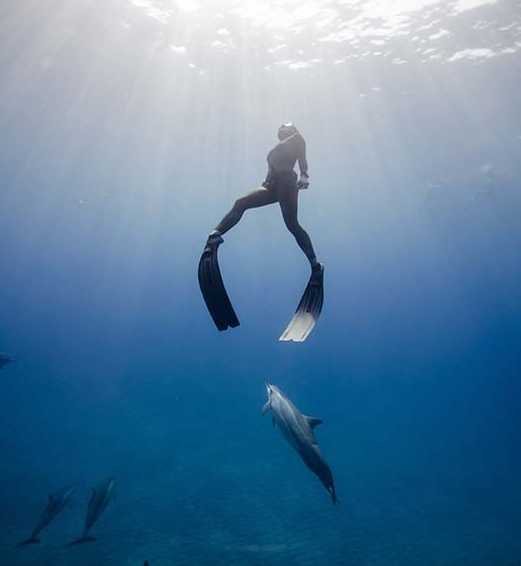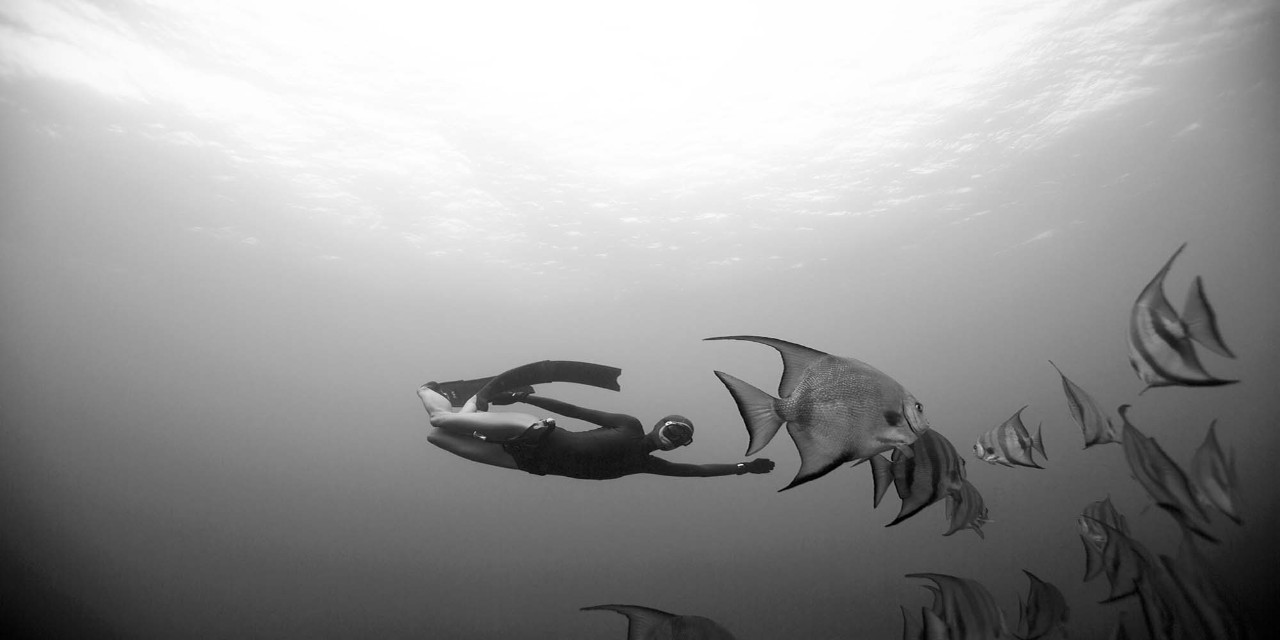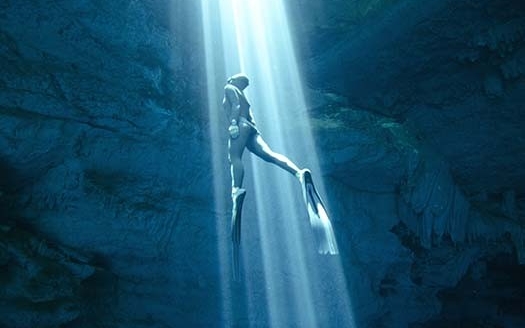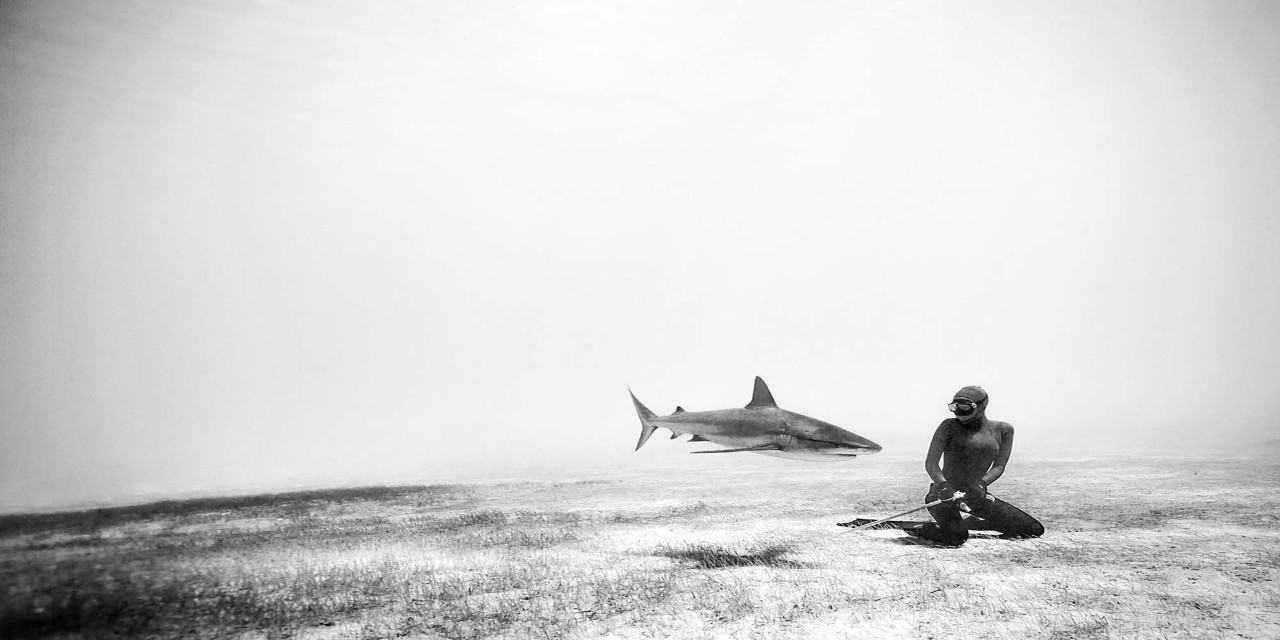No oxygen was used in creating these images. Meet the husband-and-wife freediving duo who capture stunning photos of underwater wildlife.
With wildlife photography, the lines between art and science are easily blurred. Never more so than with the work of Eusebio and Christina Saenz de Santamaria, a husband-and-wife freediving-cum-photography team who have captured some of the most enchanting ocean images you are likely to see.
Tiger sharks, whale sharks, spinner dolphins, manta rays, sea lions, pilot whales, and multiple turtles and tropical fish… they have photographed and filmed these species and more in their natural environments.
But unlike traditional underwater photography, most of their images involve one half of the duo behind the camera and the other modelling in front of it, alongside the sea life. Both husband and wife are equally talented at freediving and photographing, so that they interchange their roles.
The result – with either Eusebio or Christina looking sleek in wetsuit and huge swim fins, swimming alongside the sea life – is a captivating choreography between human and aquatic beast.
Another unusual modus operandi is that neither of them ever use oxygen to breathe. They’re always freediving, without any diving equipment, while they work. This means they don't have to decompress like normal divers, so that they can quickly change depth, or swim back to the surface to discuss the shoot.

“Freediving gives the photographer complete freedom to move around underwater,” Christina told Chart. “Therefore we can better take advantage of spontaneous moments with the other freediver, or with underwater animals or rays of light.”
Christina is originally from Sydney, in Australia; Eusebio from Bilbao, in Spain. They first met, and have now set up home, on a tiny Thai island in the Gulf of Thailand called Ko Tao. “Gorgeous, with warm waters, mostly calm, flat conditions, few strong currents, and colourful, tropical underwater life,” is how Christina describes it.

They both used to compete as professional freedivers, each clocking up various records over the years. But nowadays they split their time between travelling the world to shoot underwater photos and films, and working as hoteliers.
One of their most memorable shoots was with dolphins in 2013, off the coast of Kona, in Hawaii. “The moment we dived into the water, the dolphins came to us with curious eyes and playfulness,” Christina said of her experience. “The pod was over 60 strong and would spend the morning following us, playing tag, mimicking our movements and doing what dolphins do: openly mating with one another. They were incredibly fun and highly intelligent.”


